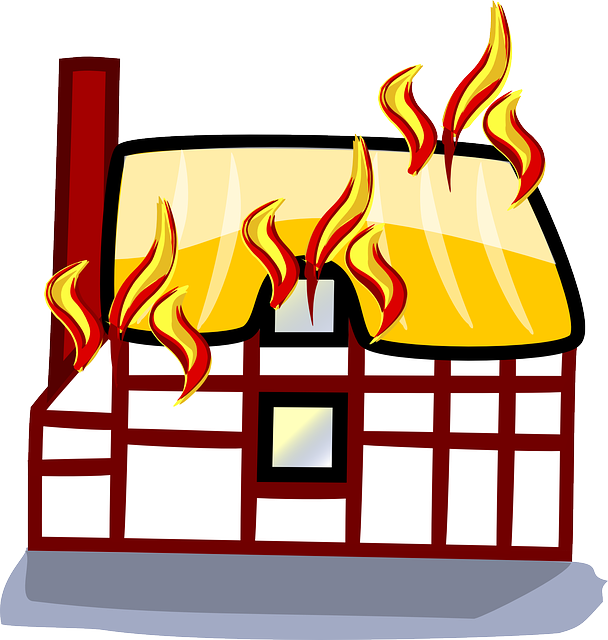Selling a fire-damaged home in California involves adhering to stringent regulations and rebuilding codes. Homeowners must disclose all damage, ensure repairs meet safety standards, and engage professionals specializing in post-fire assessments for accurate property valuations. This process is critical for both homeowners seeking to sell and insurance companies processing claims. After understanding insurance coverage, homeowners should thoroughly assess and document damage, leverage online marketing, and consult local real estate agents specializing in post-disaster sales to navigate this niche market effectively.
After a devastating fire, assessing and valuing property becomes a critical step for homeowners in California. This comprehensive guide explores the intricate process of post-fire property valuation, offering valuable insights for those navigating this challenging phase. From understanding the unique considerations in California’s real estate market to identifying fire damage and insuring your home, we provide essential strategies for selling a fire-damaged property in the Golden State.
- Understanding Post-Fire Property Valuation in California
- Assessing Fire Damage: What to Look For
- The Role of Insurance in Property Valuation After a Fire
- Strategies for Selling Your Fire-Damaged Home in California
Understanding Post-Fire Property Valuation in California

In California, post-fire property valuation takes on added complexity due to the unique challenges posed by wildfires. When a home sustains damage from fire, understanding its current value becomes crucial for both homeowners looking to sell and insurance companies assessing claims. The process involves a meticulous inspection to assess the extent of damage, taking into account not just visible scars but also potential structural integrity issues that may require repairs or even reconstruction.
Selling a fire-damaged home in California requires knowledge of local regulations and rebuilding codes. Homeowners must disclose any known damage, and repairs must meet specific standards to ensure safety and compliance. This can impact the property’s valuation, as buyers will consider both the current state of the home and the potential costs associated with necessary renovations. Professionals specializing in post-fire property assessment play a vital role in navigating these complexities, providing accurate valuations that reflect market realities while considering the unique circumstances of fire damage.
Assessing Fire Damage: What to Look For

When assessing a fire-damaged property in California for selling, it’s crucial to conduct a thorough inspection to determine the extent of the damage. Look for visible signs such as charred walls, melted flooring, and damaged ceiling tiles, which indicate the intensity of the fire. Pay close attention to structural elements like beams, columns, and foundations, as these are critical for safety and can significantly impact the property’s value.
Additionally, consider the effects of smoke and water used in extinguishing the fire. Smoke damage may include odours, discoloured walls, and stained ceilings, while water damage could result in mould growth and warped floors. These issues often require professional restoration, which should be factored into any valuation. Keep records of all observations for accurate reporting to potential buyers or insurance assessors when selling a fire-damaged home in California.
The Role of Insurance in Property Valuation After a Fire

After a fire damages a property in California, one of the first steps homeowners need to take is understanding their insurance coverage. Homeowners’ insurance policies typically include provisions for fire damage restoration and replacement. This financial protection plays a crucial role in post-fire property valuation by mitigating the loss and helping to restore the home to its pre-loss condition.
During the valuation process, insurance companies work with certified appraisers who have experience assessing fire damage. These professionals consider various factors, such as the extent of the fire, smoke damage, water damage from firefighting efforts, and the age and condition of the property, to determine the current value of the home. The insurance estimate becomes a critical component in negotiations when selling a fire-damaged home, ensuring fair compensation for both homeowners and buyers in California.
Strategies for Selling Your Fire-Damaged Home in California

Selling a fire-damaged home in California can be a challenging process, but with the right strategies, it can become a smoother transition. The first step is to assess the extent of the damage and understand that potential buyers will need to see the reality of the situation. This transparency is key; avoid trying to conceal or hide any damage, as this could lead to legal issues later. Instead, document everything—from charred walls to damaged ceilings—and consider professional photography to showcase the property accurately.
Once prepared, focus on marketing your home effectively. Utilize online real estate platforms and social media to reach a wide audience. Highlight that the property is being sold as-is, which can appeal to buyers seeking opportunities for renovation or reconstruction. Additionally, engage with local real estate agents who specialize in post-disaster sales; their expertise will be invaluable in navigating this unique market.
Post-fire property valuation in California involves a complex interplay of understanding local regulations, assessing damage meticulously, and leveraging insurance coverage. For homeowners looking to sell their fire-damaged properties in California, it’s crucial to employ effective strategies that consider market conditions and potential buyers’ perceptions. By navigating these aspects thoughtfully, selling a fire-damaged home in California can be a feasible process, ensuring a positive outcome for both sellers and buyers alike.






